Tom's Guide Verdict
The Hasselblad 907X + CFV 100C contains a huge 100MP sensor and delivers phenomenal stills. It lacks the modern frills of its sibling, the XCD 100C, but is designed with a niche audience in mind.
Pros
- +
Phenomenal image quality
- +
Works with Hasselblad film gear
- +
Lovely standard color profile
- +
Beautiful classic design
- +
Incredibly crafted
- +
Rewards slower photography
- +
100MP BSI sensor
- +
1TB internal SSD
Cons
- -
Incredibly expensive
- -
Basic AF
- -
Only one color profile
- -
No video
- -
No IBIS
- -
No EVF option
- -
Often requires a tripod
Why you can trust Tom's Guide
Sensor: 100MP BSI Medium Format
Stabilization: None
AF system: 294-Zone contrast/phase detection AF
Viewfinder: None (optional OVF)
Display: 3.2-inch tilting touch screen LCD, 2.36 million dots
ISO range: ISO 64 - 25,600
Max video resolution: N/A
Ports: USB-C
Storage: 1TB Internal SSD, CFExpress Type-B
Wireless/bluetooth: Wi-Fi & Bluetooth
Max shooting speed: 3.3fps
Max shutter speed: 1/4,000 mechanical; 1/6,000 electronic
Battery life (CIPA): 420 shots
Size/weight: 4 x 3.6 x 3.3 inches; 22 ounces
The Hasselblad 907X + CFV 100C packs a gargantuan 100MP medium format sensor into a camera body straight out of the 1950s, and is the latest in the Hasselblad ‘V’ lineup of retro bodies which harken back to the manufacturer’s storied camera-making history.
You may be looking at that list of cons up there thinking ‘how can this camera be rated so highly?’ Well, it’s complicated, but in short: this is a camera that appeals to a very niche audience who prize image quality and a traditional shooting experience above all else. It’ll also appeal to those already invested in Hasselblad film bodies and lenses, as it can connect to the manufacturer’s classic film cameras to give them a second digital life. The CFV 100C’s features (or lack thereof) are geared towards those niches, and may justify the camera’s price and drawbacks if you fall into either of them.
Can its specialty features earn it a place among the best mirrorless cameras around? Read our full Hasselblad 907X + CFV 100C review to find out more.
Hasselblad 907X + CFV 100C review: Price & availability
The Hasselblad 907X + CFV 100C was released in late January 2024 and is available via Hasselblad and major camera retailers. Medium format cameras are expensive and the 907X + CFV 100C is no exception at $8,199 / £6,729 body-only. This is in the same ballpark as other medium format cameras, such as the Fujifilm GFX 100 II ($7,499), and Hasselblad’s own X2D 100C ($8,199).

Add a couple of lenses to your basket, such as the XCD 38mm f/2.5 ($3,699) and XCD 90mm f/2.5 ($4,299) tested here, and you’re looking at over $15,000 all in. Luckily I have photographer’s insurance.
Hasselblad 907X + CFV 100C review: Design
The Hasselblad 907X + CFV 100C is actually two components sold together, which can be used (although not bought) separately. The CFV 100C digital back contains the sensor, image processor, screen and controls. The 907X is a clip-on metal frame which hosts the lens mount and shutter release.
It goes beyond simply being well-built: this camera feels like an exquisite piece of craftsmanship.
The 907X was already sold with the 50MP Hasselblad CFV II 50C. Likewise, although new, the CFV 100C isn’t exclusive to the 907X and can be paired with older Hasselblad film bodies.

Here is the unique selling point of this camera: if you have an older Hasselblad body and lenses already, the CFV 100C will allow you to use them alongside a 100MP digital sensor, bringing them into the digital age. This is its primary advantage over the similarly priced 100MP X2D 100C, which offers the form and plentiful benefits (IBIS, video etc) of a standard mirrorless camera.
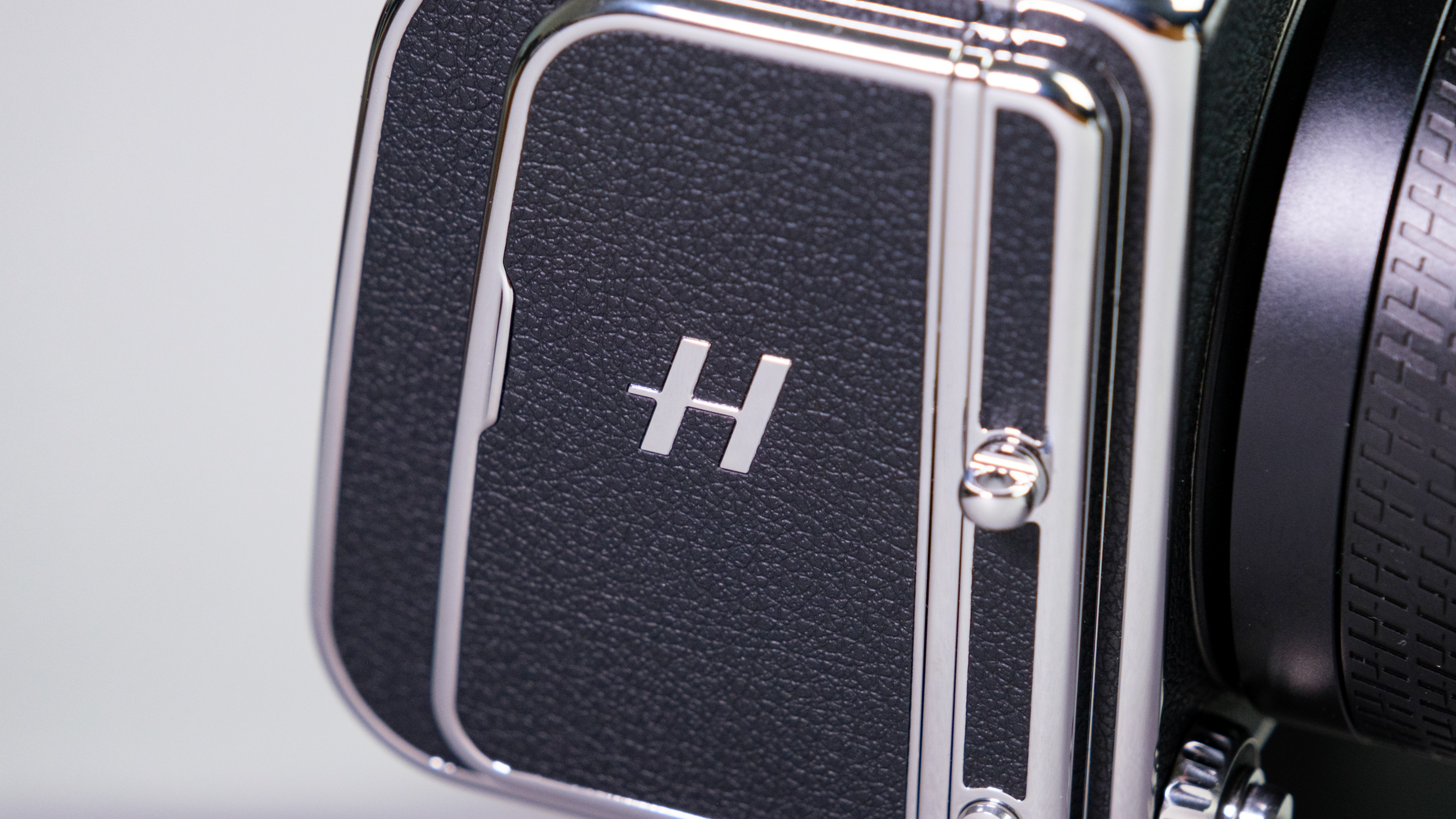
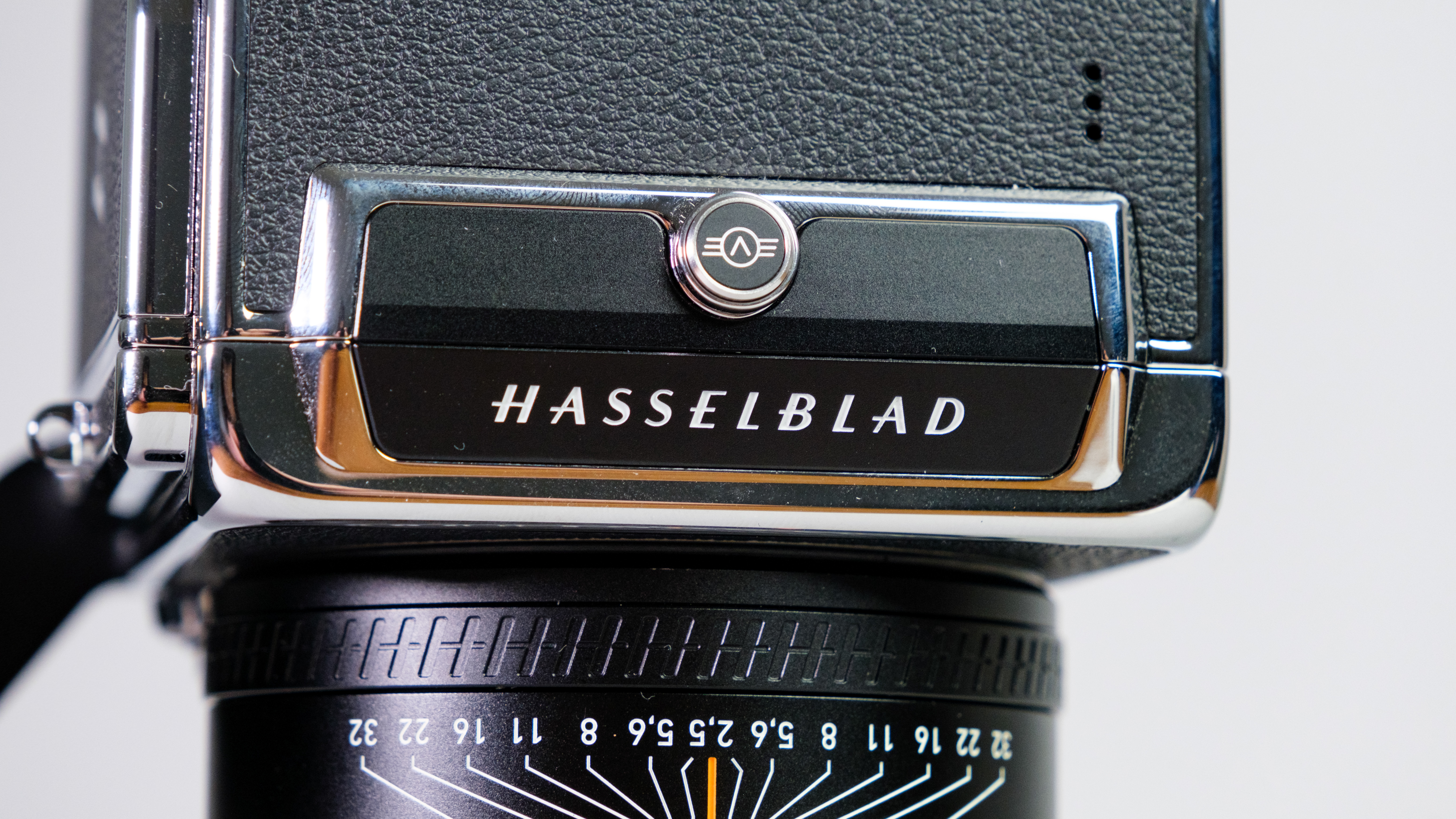

Wrapped in eco leather and edged in fingerprint-magnet chrome, the 907X + CFV 100C oozes elegance and history. Unsurprisingly, build quality is phenomenal, although it goes beyond simply being well-built: this camera feels like an exquisite piece of craftsmanship.
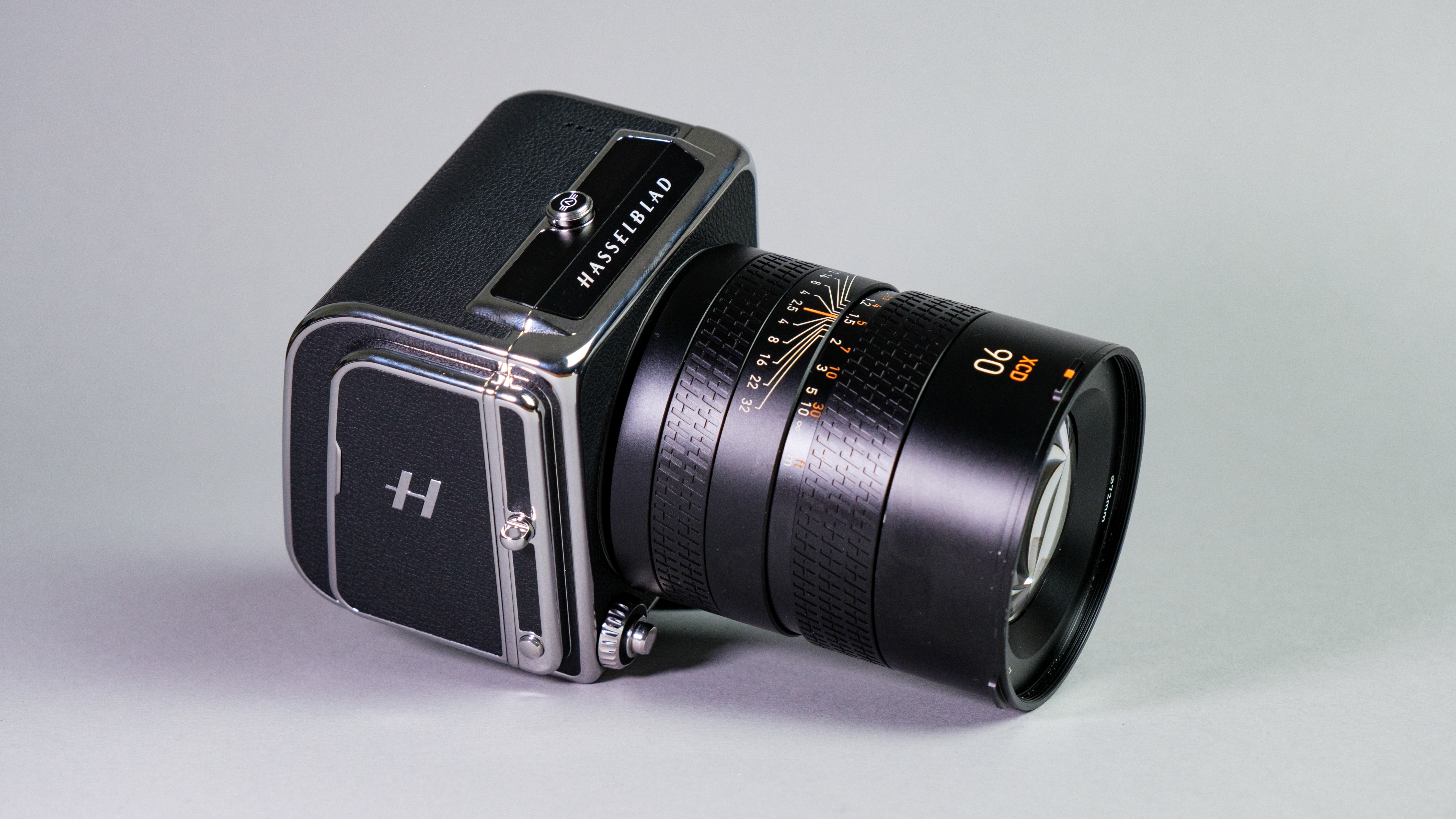
With the control handle and 90mm lens attached, the camera weighs a hefty 3 pounds 10 ounces (1.635kg). The body measures 4 x 3.6 x 3.3 inches (102 × 92 × 84mm), although lenses and accessories make it much larger. However, medium format cameras are naturally bulky, so by that measuring stick the 907X + CFV 100C camera is quite compact — a petite giant. Regardless, this camera is designed to be mounted on a tripod.
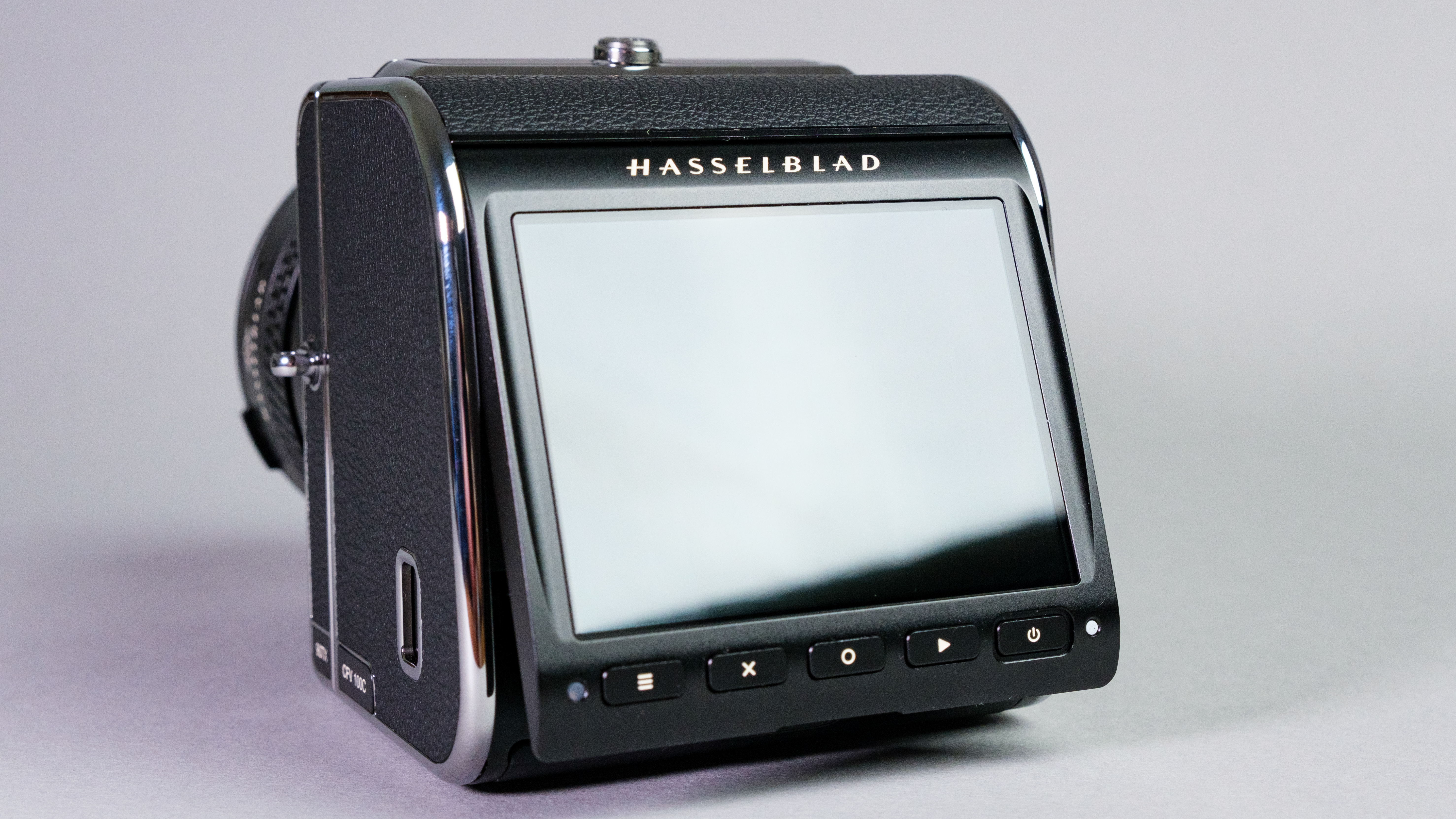
At the rear is an upwards-tilting 3.2-inch, 2.36M-dot screen — the same resolution as the display on both the X2D 100C and GFX100 II. No viewfinder is included but an OVF ($499) is available separately. Unfortunately, there’s no option for a high-res EVF. With such a high resolution sensor, it’d be practical to focus-check those images on an appropriately sharp monitor. The GFX100 II comes with a 9.44M dot EVF, while the X2D 100C’s EVF packs 5.76M dots.
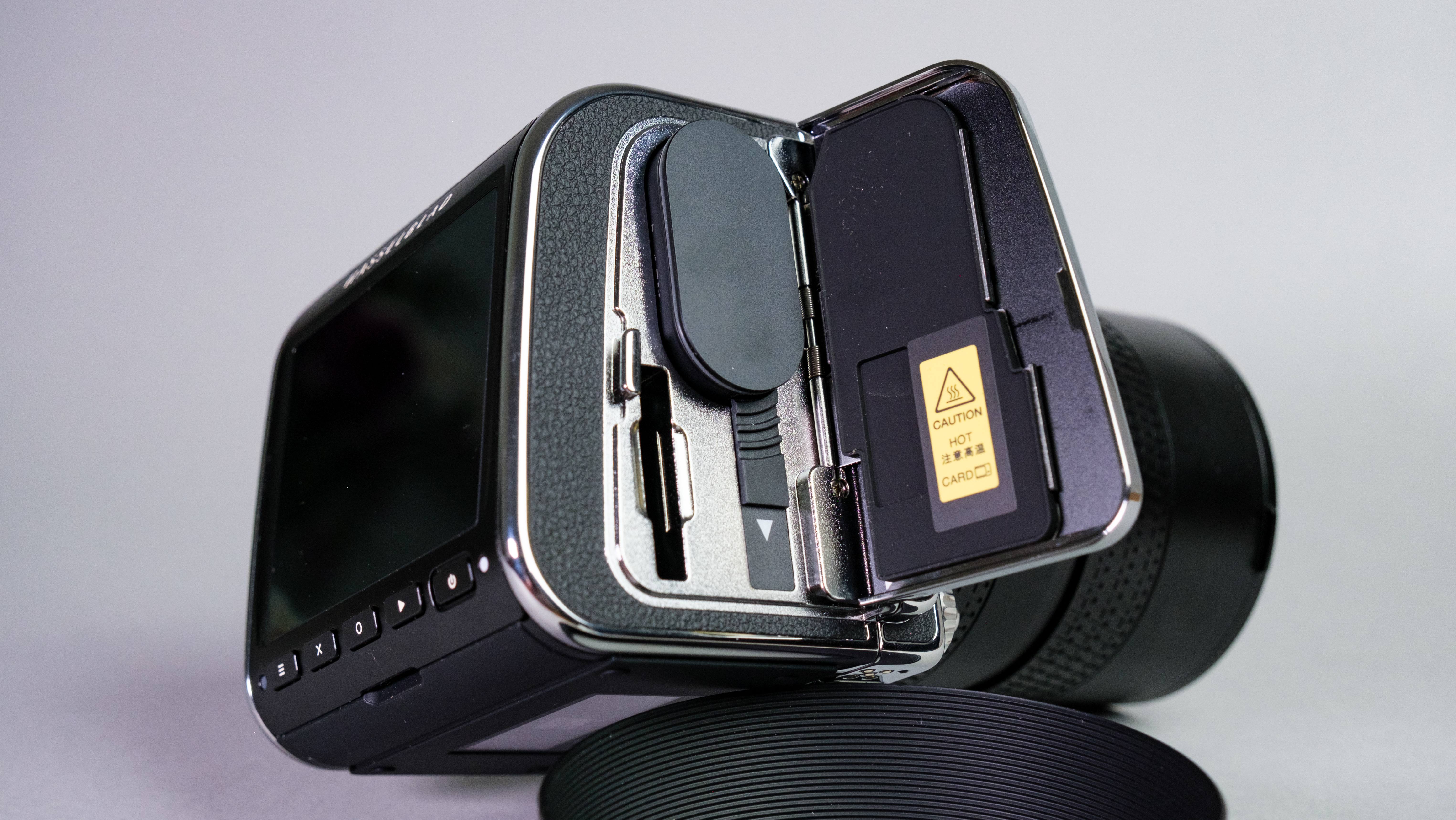
Inside the CFV 100C is a 1TB SSD, allowing you to shoot casually all day without worrying about filling up or changing cards (even though the camera’s RAW and JPEG files are 200MB and 70MB respectively). There’s also a CFExpress Type-B port for expanding storage for intensive all-day shoots. Both offer faster transfer speeds than SD cards, making offloading those huge files bearable. For data transfer and charging there’s a USB-C port behind a spring-loaded flap.
There’s no video, so no need for mic or headphone ports, although the camera does feature Wi-Fi and Bluetooth connectivity. It isn’t weather sealed, so be careful taking it out in the rain.
Hasselblad 907X + CFV 100C review: Controls
The Hasselblad 907X + CFV 100C’s rear monitor features most of the camera’s controls (without the additional grip). Thankfully the display is bright and responsive to the touch, and the menu system is sleek-looking and simple to operate.

I would strongly advise purchasing the additional grip, which makes the camera much easier to handle. It provides direct access to handy controls, including a better-positioned shutter button, scroll wheels and a focus joystick.
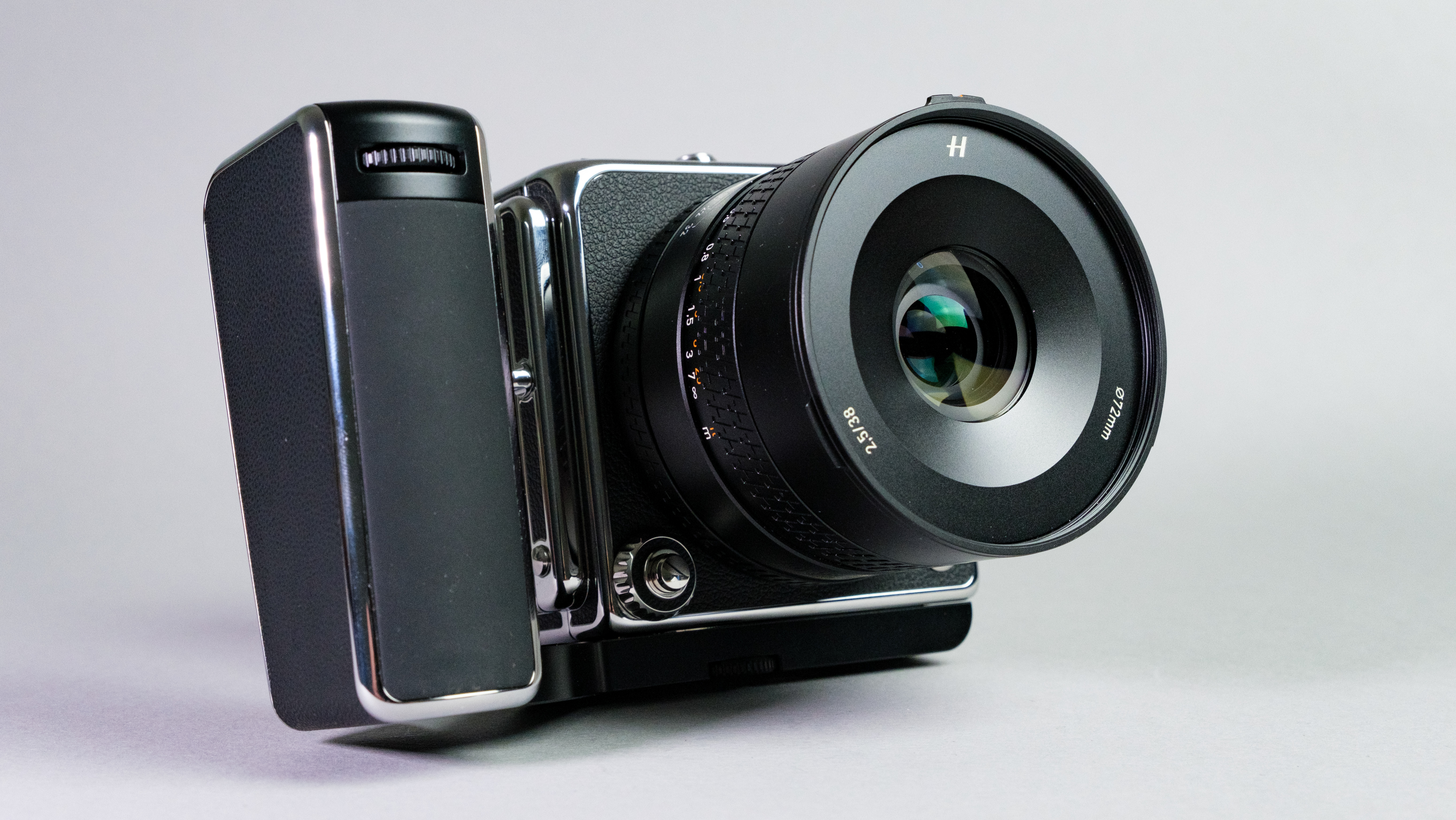
The joystick is a little blunt, tending to do too little until nudged hard, at which point it does too much. Annoyingly, ISO cannot be assigned to one of the control wheels on the grip. This meant I had aperture control assigned to both the lens ring and front control wheel — a total waste of a dial — and was forced to control ISO purely through the screen.

The grip ensures the 907X + CFV 100C can be used handheld like a conventional camera, but make no mistake, this camera is primarily designed for use on a tripod, meaning I can forgive some of its layout quirks. It’s a camera for slower-paced, considered photography, where you needn’t snatch at controls in a rush.
Hasselblad 907X + CFV 100C review: AF Performance
The 907X + CFV 100C features hybrid contrast- and phase-detection AF, which is nice to have, especially without a viewfinder for manual focusing. If you’re used to modern mirrorless camera AF systems, though, the CFV 100C’s system will feel rudimentary. It’s neither quick nor reliable in low light and, as far as detection modes go, only features face detection. So no modes for animals (although that didn't stop me getting some lovely portraits of my greyhounds).
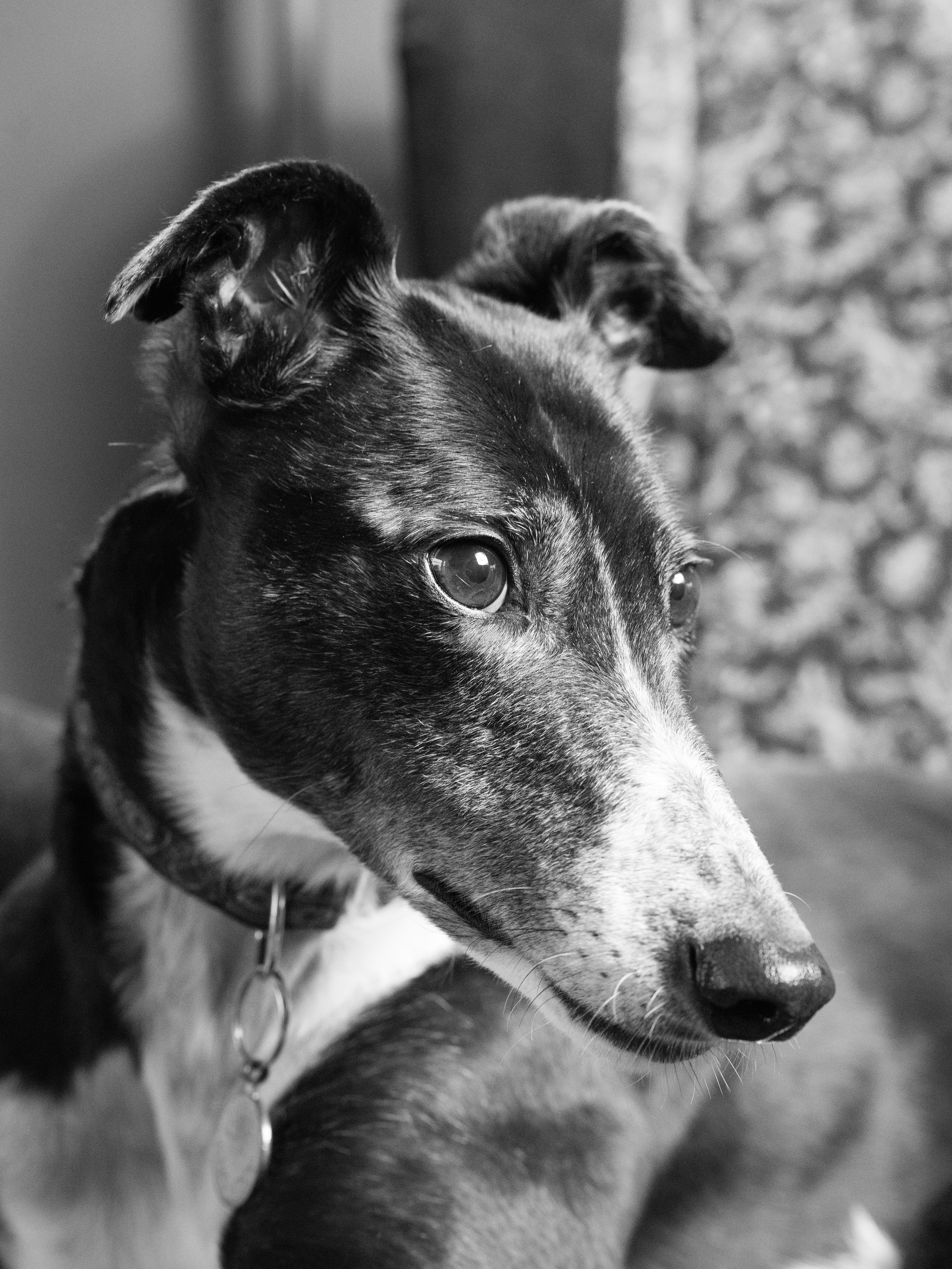
Given the camera’s intended uses, I can forgive it not having modes to track trains or birds, but there’s no eye detection either. I’ve shot many portraits on cameras without eye detection, so this isn’t the be-all end-all, but I found the face detection seemed to forward-focus, resulting in sharp noses and slightly soft eyes. You can skirt this issue simply by using the small AF point and positioning it directly on your subject’s eye. Or manually focusing, of course.
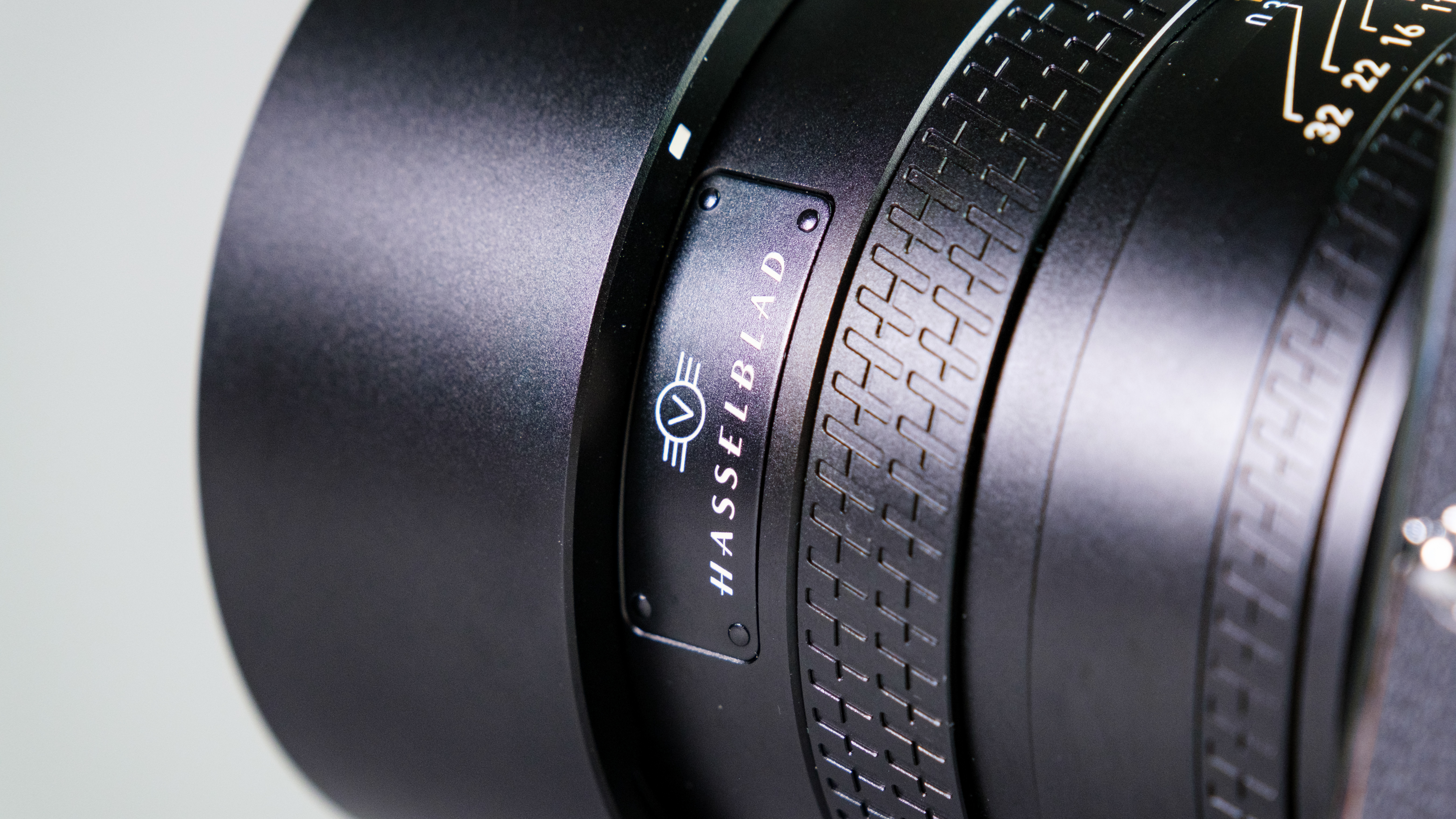
Given the razor thin depth of field when using a sensor this large with a wide-open f/2.5 telephoto lens, I often found manual focusing the best solution to ensure properly sharp focus, especially in portraits. Luckily, manual focusing with the XCD lenses is a joy, and very easy with the CFV 100C’s on-screen MF dial. You can zoom in on the screen to check focus, but a high resolution viewfinder would’ve been lovely for focusing while shooting handheld.
Hasselblad 907X + CFV 100C review: Image performance
The Hasselblad 907X + CFV 100C features a medium format sensor, which is much larger than the APS-C or full frame sensors commonly found in other mirrorless cameras. It’s the same 100MP sensor as found in the X2D 100C, and the images it produces are phenomenal.

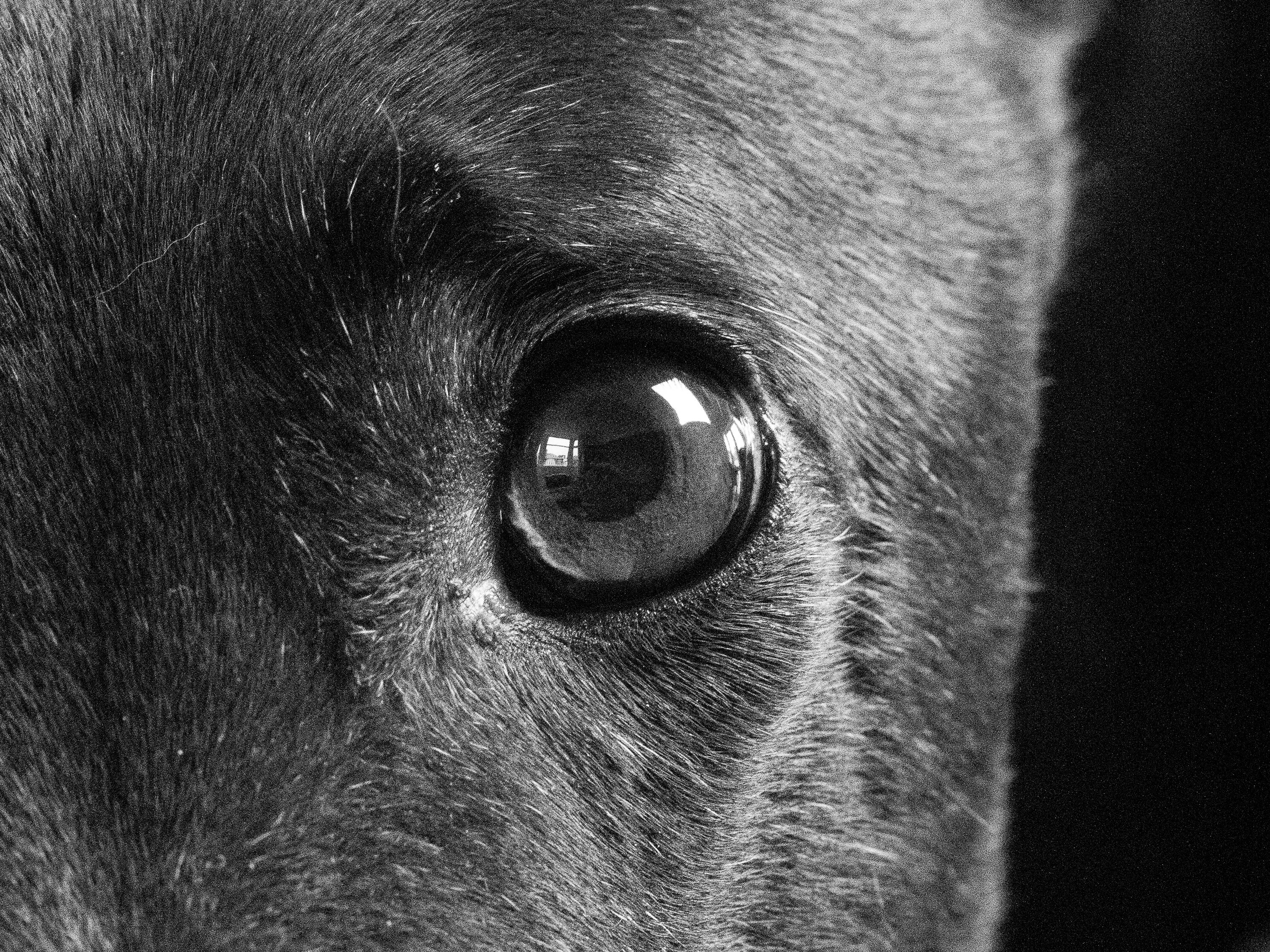
Key to their beauty is the sheer detail the sensor captures (itself owing to the outstanding XCD glass that can resolve 100MP). I can’t show you full high resolution files or else this page wouldn’t load, but the gallery above features a JPEG export of my greyhound, Nutty. The second image is a JPEG export of a substantial crop into her eye from the same image, showing how much detail the camera captures. This gives you lots of flexibility, as you can effectively crop or blow up as much as you like.

Colors are also beautiful, captured in 14-bit (resulting in 4-trillion unique shades). Hasselblad’s famed color science is demonstrated by the camera’s single in-camera color profile, which is lovely, although clearly aimed at landscapes and portraiture. Skin tones are soft but natural-looking and flattering. That said, I did notice a consistent greenish tint and adjusted images towards magenta slightly. A lone color profile can be difficult to get used to if, like me, you’re used to shooting in and seeing different profiles. In particular, I really missed a black and white profile (I converted to Adobe Monochrome in Lightroom for test shots).


I found exposure metering a little inaccurate in multi-metering photometry, but not far off — after a day of shooting I aimed for around EV-1 in most shots and rarely needed to bump the exposure by much.
The medium format sensor also delivers an impressive dynamic range. In the images below — a RAW export with only a minimal magenta tint applied, followed by the same image with the shadows and exposure boosted — you can see how much image detail and color information was captured in the shadows when lifted. The sky of the boosted image shows some noise (at full resolution at least) at only ISO 1600 — a side effect of the high megapixel count, although you have to boost shadows and look hard to see it.


Living up to its classic ethos, the 907X + CFV 100C does not feature IBIS. This seems a little problematic until you realize that ISO 25,600 on a sensor this size does not give you the trouble it would on a smaller one. The image below of Nutty is shot at ISO 25,600 and still looks fantastic. When you blow it up or crop in, noise is visible, but not even approaching ruinous, as you’d experience from a smaller sensor.

IBIS would obviously be nice for dropping shutter in low light to keep ISO as low as possible, but once again, this camera wants to be on a tripod. Of course, IBIS is particularly useful for video, which the CFV 100C doesn’t shoot — the X2D 100C offers both.
Hasselblad 907X + CFV 100C review: Battery life
The Hasselblad 907X + CFV 100C is CIPA rated for 420 shots, which I found slightly conservative. I charged the battery fully at the start of testing, then took just over 300 photos (mostly in single shot drive) and was left with around 40% of charge left at the end of testing. Extrapolating, that equates to over 500 photos from a charge. This will no doubt be helped by the fact that there’s no EVF drawing power.
By conventional standards, 500 shots is middle of the road, so a spare battery should definitely be on the cards.
Hasselblad 907X + CFV 100C review: Verdict
It’s easy to look at price versus (the lack of) features and deem the 907X + CFV 100C as an overpriced status symbol, which to some extent is true. However, there are many exorbitantly priced status symbols in the world that still reap and deserve praise — think of supercars, for example. Their cost and lack of real world usability doesn’t mean they’re bad cars.

If you have the means, the 907X + CFV 100C will give you an experience that no other modern mirrorless camera (save the CFV 50C) can, and which is thoroughly enjoyable. This is in part down to the beautiful design and craftsmanship of the camera, and in larger part down to the incredible 100MP images it produces. In largest part though, it’s because of the type of photography the camera forces you into. It’s a romantic experience, evocative of bygone eras of photography. No IBIS means you must often use a tripod, while the screen has you looking down at the camera as if into the open finder of a classic film Hasselblad. These factors, plus the limited controls, mean you must take your time, while the simplistic AF often demands you manually focus. Despite ostensibly seeming like drawbacks, these things instead help define the camera’s purpose.
If you want to take that approach to photography, the 907X + CFV 100C will get you there. And if you already own classic Hasselblad bodies and lenses, the camera makes even more sense, digitizing your existing film gear without modernizing the experience of using it too much. Both of the above can be solved with the (not much) cheaper 50MP CFV 50C.
Most people, though, shouldn’t buy the Bugatti, and should instead opt for the Honda — something like the Fujifilm X-T5 or Sony A7 IV. Besides, that’s probably all they can afford.

Peter is Reviews Editor at Tom's Guide. As a writer, he covers topics including tech, photography, gaming, hardware, motoring and food & drink. Outside of work, he's an avid photographer, specialising in architectural and portrait photography. When he's not snapping away on his beloved Fujifilm camera, he can usually be found telling everyone about his greyhounds, riding his motorcycle, squeezing as many FPS as possible out of PC games, and perfecting his espresso shots.

